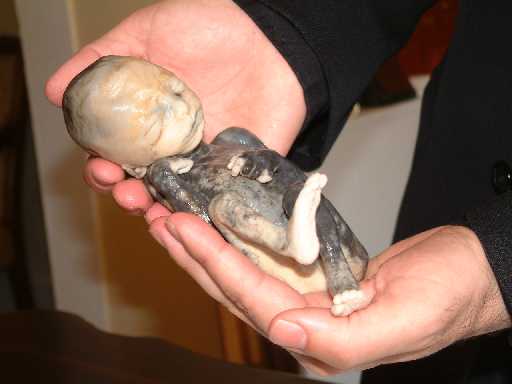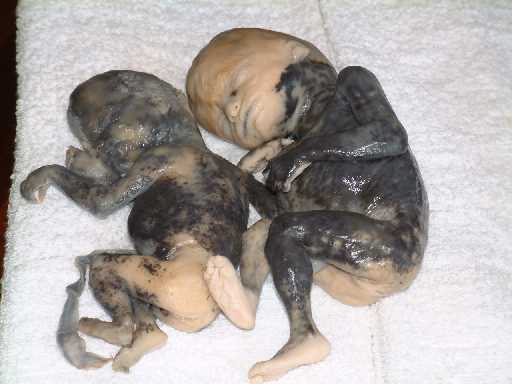The essay “Products of Conception” is a first-hand account from a nurse who worked in a hospital that did abortions. It appeared in a little-known book called, “The Abortion Debate: TCU Voices,” which was released in 2012.
Nurse Bonnie L. McClory was an obstetric technician in the Labor and Delivery unit of what she calls a “large metropolitan hospital.” She was pursuing a nursing degree and taking a class that would prepare her to work on the floor where babies were delivered. Sometimes the babies were delivered alive. Other times, the babies were delivered dead – the victims of saline abortions done at the hospital.
A saline abortion is performed by sticking a needle into the woman’s abdomen and injecting caustic saline solution into the amniotic fluid that surrounds her baby. This late-term abortion method uses the solution to poison the baby, who dies, sometimes over the course of several hours. Then labor is induced and the woman essentially “gives birth” to a dead child.

This baby was aborted by the saline abortion method. picture provided by Priests For Life
Sometimes babies were born alive after this technique. The problem of live births, as well as the risks to the mother from the saline injection, led to this method being abandoned by most abortionists in the 1990s.
Today, an induction abortion is the most prevalent procedure committed in the very late term. Dr. Anthony Levatino explains the procedure in the video below:
McClory describes how she was the only pro-lifer in the class:
My status in the class was one of the maverick. I was staunchly pro-life; my views arose from my own experience of being unintentionally pregnant at 17 and a mother at 18. None of my classmates had ever borne a child; only one was married. I had already given birth to two sons and had seen my marriage disintegrate.
My classmates did not seem too affected by our having to watch a first trimester abortion from the operating room gallery as part of our training. I sat among them, tears staining my white scrub dress; they chatted about the handsome resident doing the procedure and how lucky the teenage patient was to be able to get on with her life. I fought nausea as I watch that handsome resident piece together what he and removed from the teenager’s uterus as he made sure he got it all out. My classmates turned away from the sight of the little mound of red flesh laid out in the small metal basin. They turned away from my obvious grief, as well.
McClory was deeply saddened by her classmates’ callous attitudes. Later, the OB techs (which she and her classmates were called) were given the task of helping with saline abortions. McClory says:
We OB techs were supposed to provide the supportive care to these [saline] patients while they labored and assist the doctor when he or she delivered the dead fetus. None of my OB Tech colleagues like this part of the job. I heard them rationalize it, though, as a woman’s right to choose. But it broke my heart, every time the doctor handed me a basin with a small, perfectly formed human baby lying dead and bloody inside it. I forced myself to rationalize that I had done nothing to bring about this death; I was merely cleaning up the aftereffects. That way, I could live with myself…
McClory struggled with her conscience as her job required her to attend more and more abortions:
Saline abortions became more and more frequent in the Labor and Delivery Unit. In an effort to cope, I read about the procedure, hoping against hope that it was not as horrible as my mind imagined it to be. It wasn’t – it was worse.
The physician first raised a skin wheal with a local anesthetic on the maternal abdomen. Then a long needle was inserted into the uterus, through the numbed abdominal area. A fairly large amount of amniotic fluid was withdrawn from the uterus and then replaced with hypertonic saline. Hypertonic saline cause the fetal cells to burst. Death ensued shortly, but not before the fetus convulsed in death throes. Sometimes the mothers could feel these convulsions, depending on how far along in pregnancy they were.
She describes one horrific “delivery”:
The doctors usually attended the saline abortion deliveries, which could be complicated. Many of the fetuses were born feet first. Delivering the small head could be challenging because the opening of the uterus, the cervix, sometimes closed down around the head, trapping it. Once I saw a doctor pull so hard, he detached the body from the trapped head. Of course, the fetus was already dead, but he was as horrified as I was; I saw his eyes above his blue facemask.
Most of the patients were heavily sedated; they were barely aware when their dead baby was whisked away in a basin. A few, however, were awake:
The few patients who refused sedation had varying responses to their abortions, but most became agitated, a few hysterical. Some asked the sex of the aborted fetus. All of them looked away from the towel covered basin containing the dead baby.
Saline abortion victims.
McClory was given the task of handling the babies’ bodies and preparing them to be sent to the pathology lab where they would be dissected:
Cleaning up meant boxing up the fetus in a round, white, one gallon cardboard container – the kind you see in ice cream stores. I had to place one of the mother’s identification stickers on the box and then put it into the specimen refrigerator, awaiting its eventual destination in the pathology lab.
At times I was the unwilling midwife, forced into delivering lifeless mites when I was the only one who walked into the labor room to find them half born.… I could also identify the gender of those fetuses; they were fully formed, even if they were only 5 to 8 inches long. I hated this part of my job…
McClory may have hated her job, but she coped with it especially well. She continued working at the hospital and rationalized her role in the abortions. But then there was the abortion that changed everything.
Her assignment was to care for a teenager who went into labor after a saline abortion.
I remember looking at her chart, seeing the usual state required physician certification that the pregnancy was less than 20 weeks… I carried the usual little birth kit into her labor room; we did not bother to open a standard delivery room for an abortion patient.
Before I had time to introduce myself, much less take her vital signs, it was obvious she was about to deliver. I hit the call button to summon help, opened the birth kit, donned my sterile gloves and proceeded to deliver a nearly 4-pound dead baby girl, about 15 inches long, with a full head of hair. I tried to hide the little body from the patient, she saw it, and began screaming. “It’s a baby! My baby! My baby!”
Babies born at four pounds today often survive with minimal or no health problems. I personally was born premature and weighed only 4 pounds, 8 ounces at birth. Slightly larger than this baby, I was one of the older preemies in the care unit, where I spent the first few months of my life.
McClory goes on with her story: When the doctor arrived, he brusquely told her to take the “specimen” to the utility room. As she carried the baby away, the doctor injected the girl with a powerful narcotic and her screams died away into sobs. The baby was too big to fit into the containers that were generally used.
Seeing this, the head nurse told McClory to get a baby shroud, and clean and dress the fetus for the morgue. McClory describes the aborted baby girl:
She was beautiful, even in death. I gently cleaned her, patting her skin dry so it would not peel. Her silky fair hair had a slight curl to it after I washed it. She had long eyelashes, high cheekbones, and a tiny cleft in her chin. Her fingers were long and delicate, tiny nails dotting their ends.
After I dressed and tagged her, I conditionally baptized her. Her mother, I knew from the records, was Catholic. I held her in the crook of my left arm, against my heart – the same place I always held my own babies – and poured a few drops of water over her cool forehead.
My tears mixed with the water as a baptized her. “If you are able to receive this Sacrament, I baptize you in the name of The Father, The Son, and the Holy Spirit. Amen.” Then I hugged her close in a great gasping sob and, in a gesture any mother would recognize, placed a kiss at the top of her little head. After I had done it, I realized it would be the only kiss she would ever receive.
She adds:
I picked up the necessary paperwork from the clerk and headed toward the back elevator. As I did so, I heard a woman asking the clerk if she could see her daughter. It was my patient’s name she gave.
I stopped and glanced back over my shoulder. A well-dressed couple in their mid-40s stood there. She had several diamond rings on her long, long fingers. He had fair, wavy hair and a cleft in his chin. Bile rose in my throat and it took every ounce of strength not to scream. The elevator came. I wheeled the little basin that on board, press the button for the basement, and safely delivered her to the morgue.
The young Jamaican attendant on duty gently lifted the small bundle from the basin and as I signed the morgue’s logbook. “Ah, God’s got himself another little angel,” he said in a soft island lilt. “Yes, he has,” I replied.
Why had the girl been aborted so late? McClory soon found out:
On returning to the labor and delivery floor, my head nurse pulled me into her office to see if I was okay… My back to her, I said, “Nancy, how could that doctor mistake a nearly eight-months baby for an 18 weeker? Even I can tell the difference when I palpate a pregnant abdomen.”
“Turn around, dear.” I did so. Her eyes were damp, like she was going to cry. “He knew right well she was that far along. Her parents are friends of his. Don’t say another word. It will all come out in the wash.”
I knew she meant it would end up in the physicians’ internal review committee, where doctors slapped each other on the wrist when they made mistakes that did not end up in litigation. I also knew the review committee was just a formality and that nothing would be done…
At the end of her shift, McClory submitted her resignation. Gone were the rationalizations. She could no longer aid in performing abortions, even if she was only “cleaning up” after them.
McClory went on to raise her children and helped women facing unplanned pregnancies. As a nurse, she always refused to work in any clinic or hospital that did abortions. Her choice not to work in some facilities cost her job advancement opportunities and earned her the scorn of some of her colleagues. But she never again was involved in an abortion.
In some states, abortion is legal all the way up to the moment of birth. Planned Parenthood, which is the nation’s largest abortion chain, commits late-term abortions, and has even lobbied in favor of infanticide.
In my home state of New Jersey, for example, a woman could get an abortion as late as she wants, as long as she can find a doctor willing to perform it. Legislation before Congress, if it passes, would ban most late-term abortions, regardless of how they are done.
Source: Bonnie L McClory “Products of Conception” Charles K Bellinger, ed. The Abortion Debate: TCU Voices (Fort Worth, Texas: Churchyard Books, 2012) 12-18










